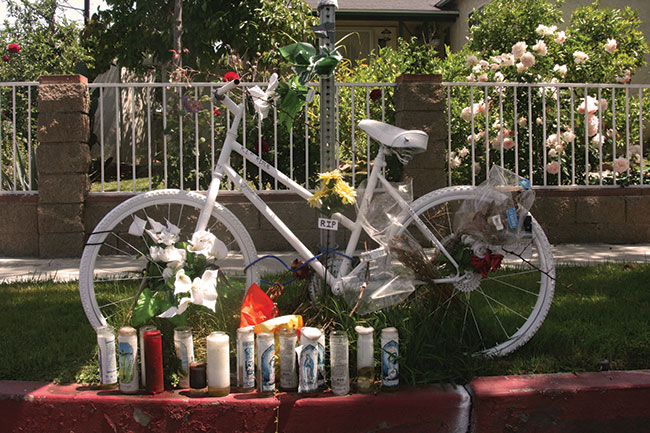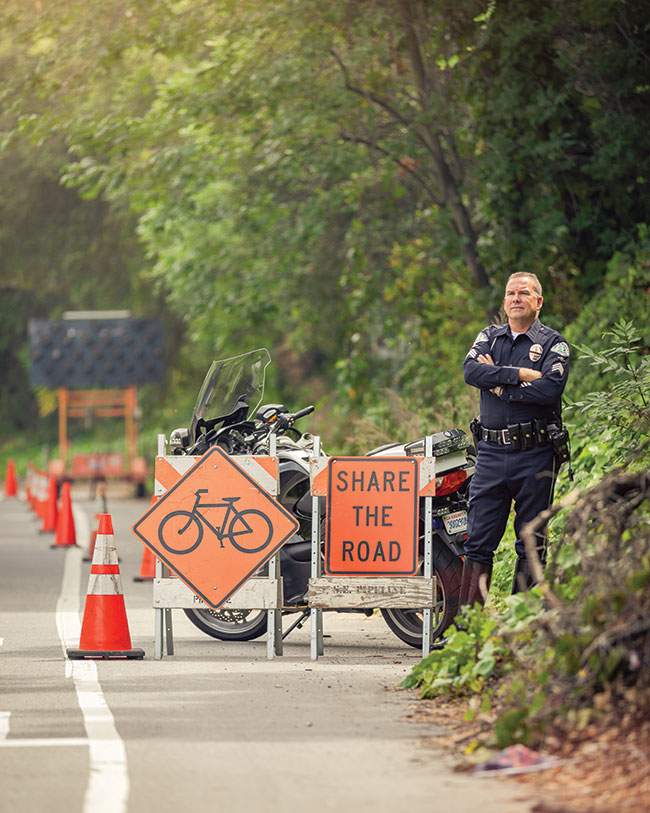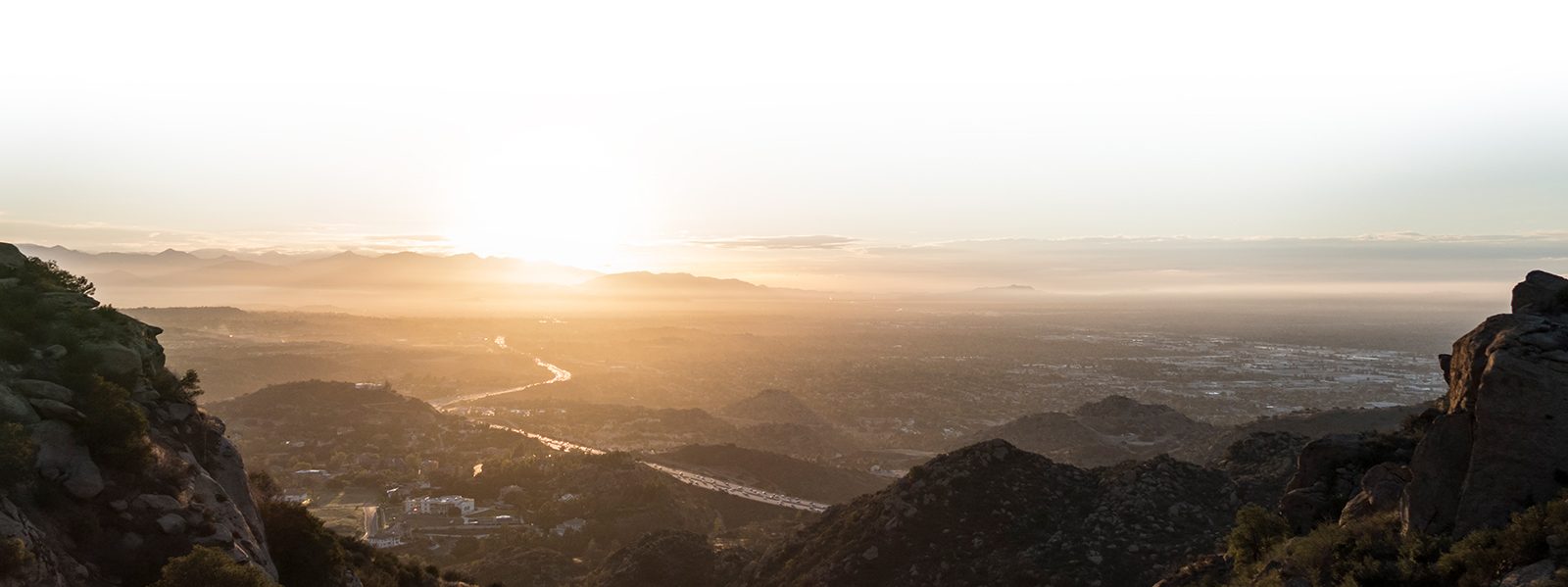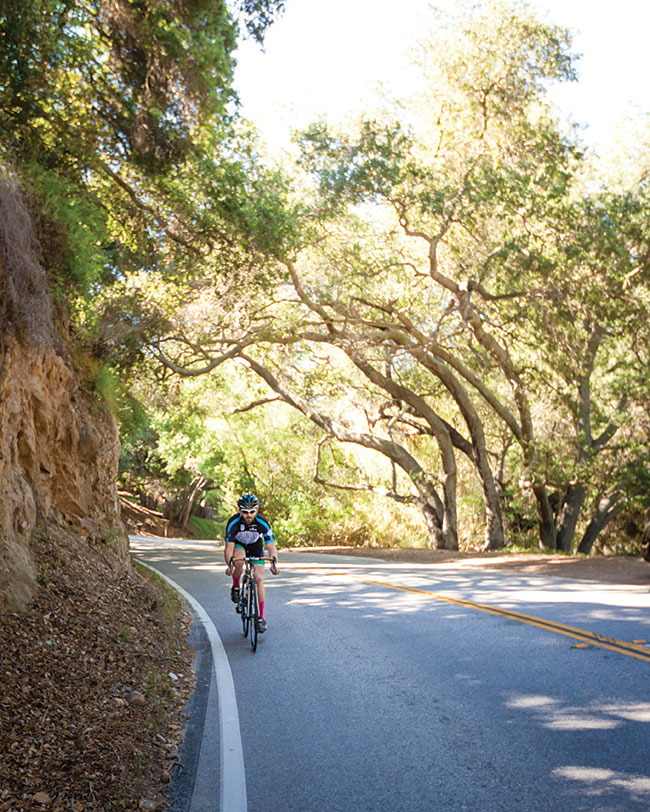Cycle of Danger
Biking fatalities in the Valley are up—way up. There were more than four times as many people killed last year as in 2012. One of those fatalities struck home with Ventura Blvd; the father of one of our 2013 Top Teens, who became a summer intern, was killed in a hit-and-run. Here we take an in-depth look at the hazards of biking and what cyclists and motorists can do to prevent catastrophe.
-
CategoryPeople
-
Written byStefan Slater |
Life can turn on a dime. For Elitza “Ellie” Batchiyska that moment came after she awoke one day last December. She recalls that her house was strangely quiet that morning.
The Syracuse University freshman was back in the Valley on winter break, and her father, 57-year-old Dimitar Batchiyski, was not home which struck her as odd. He worked the overnight shift on a production line at a local vitamin manufacturing plant and typically could be heard in the kitchen making coffee in the mornings.
“Suddenly my mom ran into my room and yelled, ‘Get up, get up! We have to go! Your dad is in the hospital—I just got a phone call!’ From that moment on, it was a nightmare,” recalls Ellie.
Her father, who’d emigrated from Bulgaria 15 years ago, was a fit and dedicated biking enthusiast. Most days his wife would take the car, and he’d bike—mostly on back streets—to and from his Van Nuys home to the plant in San Fernando.
It was on one of those back streets where Ellie’s father was struck by a car in a quiet, tree-lined residential neighborhood in Panorama City. The driver fled the scene.
Some locals found the father of two lying in the street. “Thinking that someone just left him there filled me with a rage and inexplicable anger. It is sickening not to stop for a human being,” says Ellie.
Dimitar, who was not wearing a helmet, was rushed to Providence Mission Hills Hospital suffering from a traumatic brain injury. He died days later after undergoing surgery.
“It was the worst dream you could possibly have,” says Ellie. “And no one knew exactly what had happened.”
RISKY BUSINESS
Ellie’s father is part of an alarming statistic that illustrates how dangerous cycling has become on our roadways. During 2012, there were two bicycling fatalities in the San Fernando Valley. In 2013 that number increased to nine, according to the San Fernando Valley LAPD traffic unit.
Though LAPD can’t pinpoint exactly why that uptick occurred, Valley traffic officer Troy Williams surmises it may be partially due to an increased population and the recent economic downturn. “There are a lot more people using their bikes for commuting, including non-professional cyclists,” says Officer Williams.
Furthermore, the increase in cyclists highlights a crucial and complicated safety issue in the Valley: Motorists and cyclists typically can’t share the road easily in our city. Los Angeles was originally designed around the automobile—as our complicated freeway system can attest to.
So despite the addition of bike lanes, many of which randomly fluctuate from several feet wide to just over two feet wide, the situation of bikes moving in close proximity with ton-plus vehicles, remains perilous. And it can easily be exacerbated by ignorance; sometimes both parties are not aware of vital, and often life-saving, traffic laws.
“Most people should know this,” says Sgt. Stephen Egan of the Valley traffic unit, “but the bicycle is considered the same as a car.” For instance, while some motorists may view cyclists who ride in the street as bothersome, it is important to note that if a road is narrow or lacks a bike lane, the cyclist has a right to ride in the street.
On the other hand, some cyclists believe they have free rein over sidewalks. But while some cities in California do allow for riding on sidewalks, others do not. Police emphasize that education is a key to cyclists and motorists safely sharing our streets.

The makeshift memorial, anchored by a Ghost Bike, at the site of Dimitar Batchiyski’s accident.
SPREADING THE WORD
The San Fernando Valley is not the only part of Los Angeles where deadly cycling incidences have occurred recently. Cyclist Luis “Andy”
Garcia, 22, was killed during a hit-and-run
on the Cesar Chavez bridge in Boyle Heights
last September.
“The worst part was seeing my friend on the ground in the middle of the street,” says Mario Lopez, who’d been riding with Luis when the incident occurred. Mario was also struck by the car and severely injured.
“I was immobilized and couldn’t move. I couldn’t do anything on my own,” says Mario. He adds that his group had been riding properly, with reflectors and on the right side of the road.
Still recovering from his injuries, Mario says that helping spread awareness about what happened to Luis, as well as educating others about traffic laws, has helped him cope with the tragedy. He credits Ghost Bikes, a grassroots organization comprised of individual cyclists and cycling groups, for much of that.
The group works to promote bike safety and awareness in an unusual and provocative manner. At the site of fatal bike accidents, they place a white bike, which typically gets transformed into a makeshift memorial to the victim.
There were “Ghost Bikes” placed at both Luis’ and Ellie’s father’s accident scenes. Ellie believes the one at her dad’s site helped police catch (and arrest) the man who allegedly hit her dad.
”A lady in the neighborhood saw the memorial and learned what had happened. Then she realized that a man she’d been renting a room in her home to had not been seen driving his car since the accident. His car matched the description of the one that hit my dad. So she called police,” she says.
However, the main goal of Ghost Bikes is not solving crimes but rather promoting safety. “There are a lot of motorists out there who don’t think they should share the road,” says Danny Gamboa, a documentary filmmaker and cycling enthusiast who places bikes at accident sites throughout Southern California with the Ghost Bike organization.
He adds that someone needs to advocate fothe rights of cyclists. “That could happen to anyone and can happen to me. I feel violated when cars get too close to me.”
Though there are organizations like the Los Angeles County Bicycling Coalition that push for additional safety measures—like an additional protected bike lane in the NoHo Arts District, for instance—Danny believes Ghost Bikes is filling an important void. “It’s about paying it forward and doing something positive for the community,” he says.
Cycling Safety Tips
- Be assertive and learn the rules.
- Minimize travel on high-traffic roads.
- Avoid cycling during rush hour.
- Wear helmet, reflectors, wheel flashers
- and bright clothing.
-
Do whatever you can to make your presence known—
including signaling, obeying traffic laws and making eye contact with drivers. - Ride with a group to increase visibility.

LAPD Sgt. Stephen Egan of the Valley traffic unit on a blocked off bike lane along Sepulveda Boulevard.
David Versus Goliath
Cyclists believe that a major part of the problem is that there’s a growing disconnect between them and drivers—and an apparent disregard on the part of motorists for cyclist safety. Jon Goldstein, a landscaping contractor and designer, often rides in a large group of cyclists throughout Los Angeles, including Griffith Park.
“I feel it’s more cars that do not even con-sider cyclists and are generally inconsiderate towards motorcyclists and pedestrians too,” he says. “They’re very self-absorbed.”
Another cyclist in the group, Herb Meyerowitz, concurs. “I see a lot of people who are distracted: cell phones and texting. I see a lot of that. I had one instance where a lady was following me up close with one phone in one hand and a dog in the other.”
Gideon Kleinman, co-owner of the eatery Pedalers Fork, which has a bike shop on the premises, points out that drivers tend to not pay attention to cyclists. “Awareness for cyclists is low,” he says. However, he does feel that, while cyclists share virtually all of the same rights as a car, they should try to avoid high-traffic streets.
“Not all cyclists follow the law, but not all drivers do either,” says Molly Arevalo, a Spanish teacher and cycling enthusiast. She believes that, with streets here designed primarily for vehicles, cyclists are treated as a secondary concern.
Drivers, she adds, also have a tendency to view cyclists as a nuisance. “There are drivers who are in such a rush,” says Molly. “Most streets in Los Angeles have two lanes, so it isn’t much of a hindrance for to take another lane.”
However, police believe cyclists are also partly responsible for the situation. Officials point to a lack of compliance with laws and a general lackadaisical attitude about safety: not stopping at lights or stop signs, not signaling properly, riding on sidewalks and at unsafe speeds, and not wearing helmets.
Sgt. Egan says that “weekend” cyclists—the large groups that cycle over long distances—are generally aware of basic traffic laws. But commuter cyclists, who may only bike casually, are often not mindful of basic laws, such as riding with the flow of traffic or signaling properly before making a turn.
Additionally, some cyclists ride bikes that are unsafe for the road, like fixed-gear bicycles or “fixies.” Officer Williams warns, “These fixies are very dangerous. There is
no ability to stop quickly.” Those bikes, he points out, were originally designed just for track riding.
Drivers need to be aware of the rights of cyclists too. “A lot of drivers don’t realize that cyclists have a right to be in the street,” says Sgt. Egan. “When in a traffic lane, the cyclist
has a right to be in that lane especially if it’s narrow. You have to move over and pass safely.”
California’s “three-foot rule,” which will take effect this September, is seen as a victory by cyclists. The new rule will require motorists to stay at least three feet away from cyclists when they are passing them in the street. “We just want to make awareness our priority,” concludes Sgt. Egan.
PEDALING TOWARD SAFETY
In California, only juveniles are required to wear a helmet. Ellie says she and her mom tried to get her dad to wear one, but he “liked the feel of the wind in his hair.” She often wonders what would have happened if he’d been wearing one.
“I honestly think there still would have been a head injury, but he’d still be alive. That is the kind of guy a lot of cyclists are. Free spirits,” she says wistfully.
Ellie believes it is incumbent upon city officials to do more to create a safer environment for cyclists, many of whom see the sport or activity as an extension of the California lifestyle. “For me, no matter how much time you spend in a car, you want an outdoor connection—that is what we are known for in California. There is room to walk and room to drive. We love cars, but we also like being outside. We need to balance the two.”
Architect May Sung Comes to The Rescue on a Studio City Reno Gone Wild
In the right hands…finally!
Join the Valley Community









